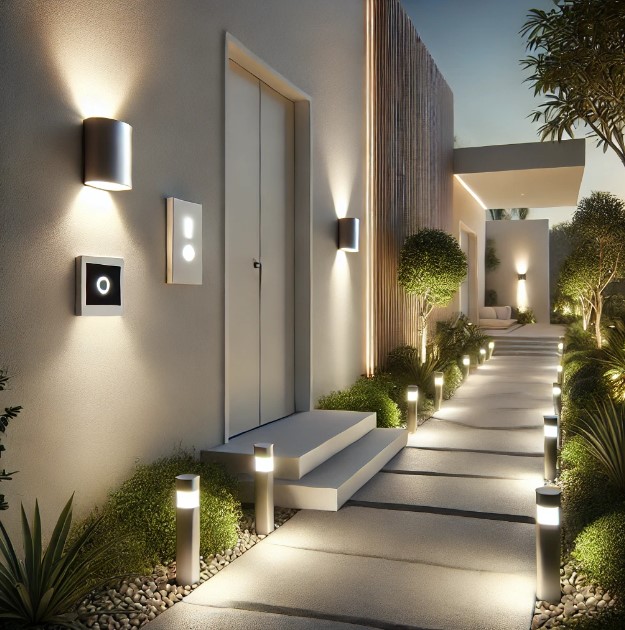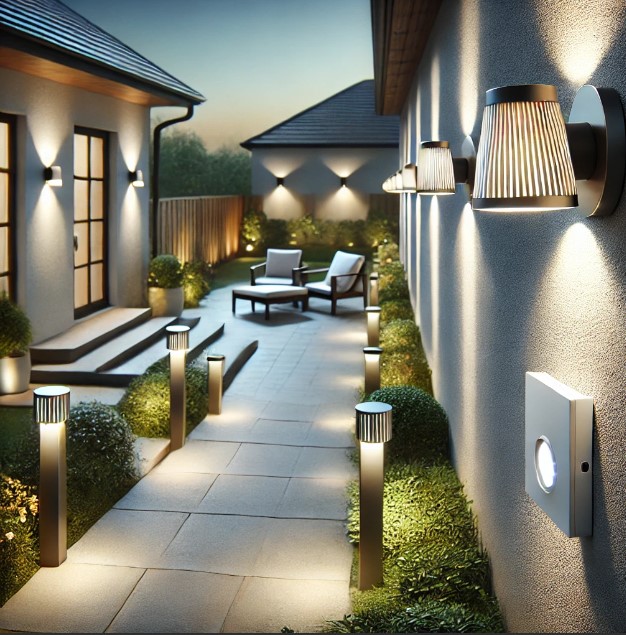-
Product Catalog
- Security and Surveillance Systems
- Automatic Circuit Breakers for Direct Current (DC) Circuits with Integrated Overload, Short-Circuit, and Voltage Stabilization Protection Functions
- Lighting with the help of electrical energy
- Automation and Control Systems
- Sealing profiles | rubber | gaskets | strips
- Inflatable Liquid Storage Tanks | Reservoirs | Bladders
- Inflatable rubber plugs for sealing high-pressure plumbing pipes
- Electrical distribution and installation
- Solar Energy Generation and Management Equipment
- HVAC control solutions for heating and ventilation.
- Special products and accessories
- Other products
- Safety tools
- Quality used products
-
-
Outdoor lights
-
Read more


Outdoor lighting fixtures are an essential part of creating a safe, aesthetically pleasing, and functional exterior lighting for buildings. They enhance the overall appearance of the exterior, help with orientation, ensure safety, and create a pleasant atmosphere.
Main Types of Outdoor Lighting Fixtures:
Wall-mounted Fixtures:
Usage: Installed on walls near entrances, patios, or garages. Often used as the primary light source by front doors or building facades.
Design: Can be decorative or minimalist. Usually features clear or frosted glass for evenly distributed light.
Benefit: Provides directional light and helps illuminate entrances and pathways.
Downward-facing Fixtures:Usage: Used in patios, porches, and facades to illuminate the areas below.
Design: Typically mounted on ceilings or walls to direct light downward.
Benefit: Directional lighting ensures light is aimed at specific areas, reducing light pollution.
Motion Sensor Fixtures:Usage: Designed for security, they automatically turn on when motion is detected. Used near entrances, garages, or around the house for safety.
Design: Can be mounted on walls or posts and usually feature a neutral design to suit various exteriors.
Benefit: Automatic activation saves energy and enhances security.
Ground Lights:Usage: Installed directly into the pavement or ground to illuminate pathways, garden features, buildings, or other objects.
Design: Small, flat fixtures that are often recessed into the ground to shine light from below.
Benefit: Emits light unobtrusively, creating no visual obstruction and is great for highlighting gardens or building accents.
Technical Specifications:IP Rating: Outdoor fixtures must be resistant to water and dust. An IP rating indicates the level of protection – a minimum of IP44 is recommended for outdoor fixtures.
Corrosion Resistance: Since fixtures are installed outdoors, they must withstand moisture, sunlight, and temperature fluctuations. Common materials include stainless steel, aluminum, plastic, or specially treated metal.
Energy Efficiency: LED technology is highly recommended for its low energy consumption and longevity.
Light Color: When choosing fixtures, it’s important to consider the color temperature of the light. Cool white light (4000-6000K) is better for safety, while warm white (2700-3000K) is ideal for creating a cozy atmosphere.
Pros:Safety Assurance: Fixtures with motion sensors help protect homes from break-ins and improve visibility in the dark.
Decorative Function: Fixtures can serve not only for lighting but also as decorative elements that enhance landscaping or building architecture.
Energy Saving: Using LED technology and motion sensors can significantly reduce energy consumption.
Cons:Cost: High-quality outdoor fixtures, especially those with LED technology or integrated motion sensors, can be more expensive.
Regular Maintenance: Although LED fixtures require little maintenance, they may need cleaning from dirt, dust, or cobwebs over time.
Properly selected outdoor fixtures not only ensure safety and practicality but also provide a stylish lighting solution for your exterior spaces.No items found.


